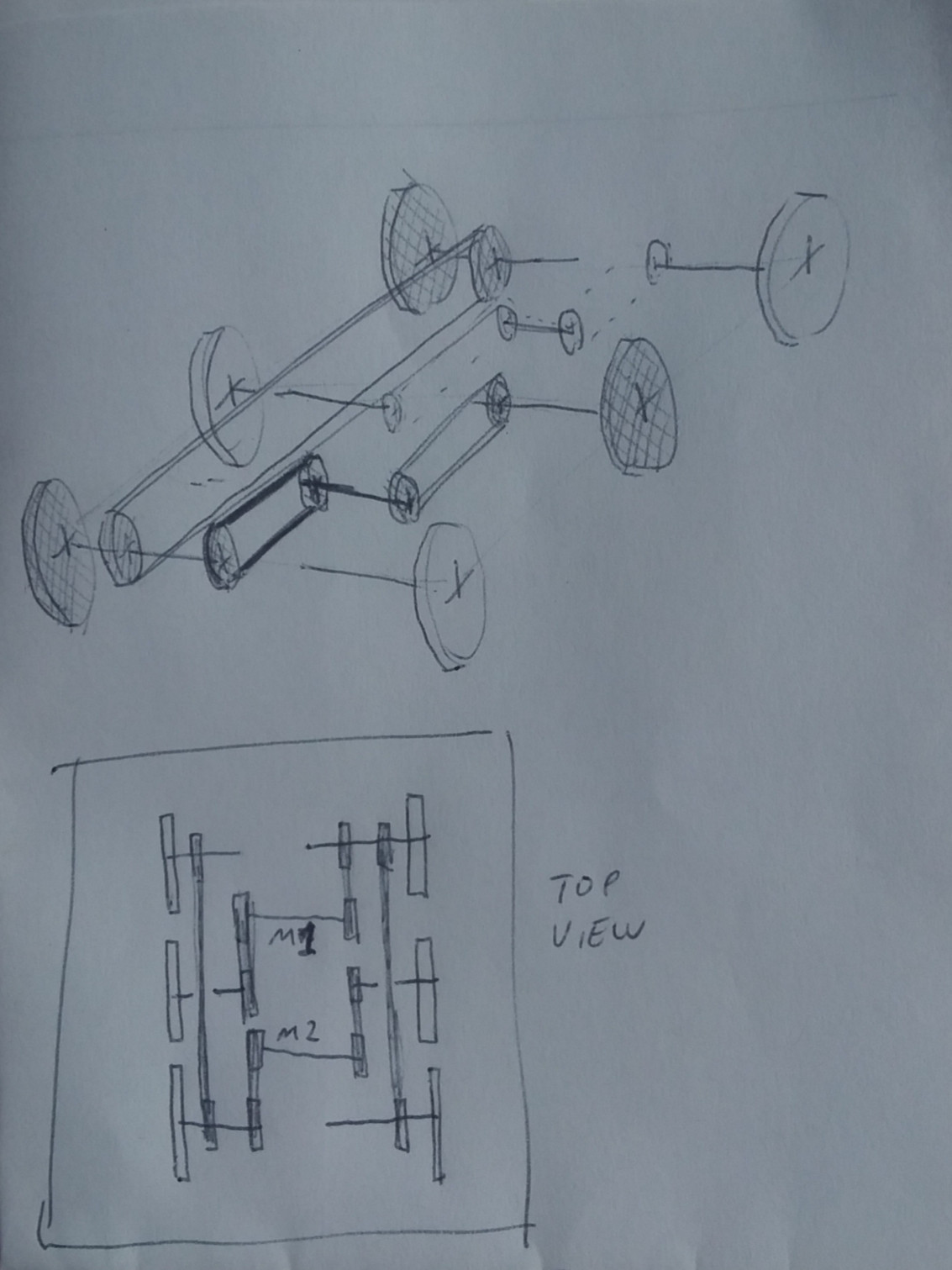I have an assignment for my Mobile Robotics course to design the drive mechanism for a legged hexapod and demonstrate its gait in motion.
The idea is to design the hexapod as per the following schematic:
There are 2 motors in the mechanism, each driving 3 sets of wheels. Wheels 1,3 & 5 are connected to one motor and wheels 2,4 & 6 are connected to the other. The wheels work as sort of a crank to produce motion in the legs and both the motors are 180 degrees out of phase to enable a working gait.
The part where I am having trouble is designing a gear mechanism that connects the 3 wheels in this triangular configuration to a single motor. If anyone has ideas for that, or further suggestions, it will indeed be very helpful.

